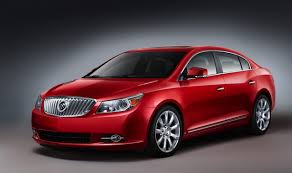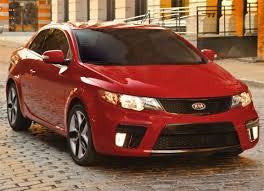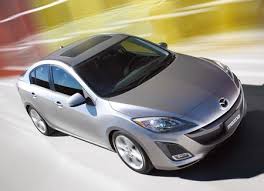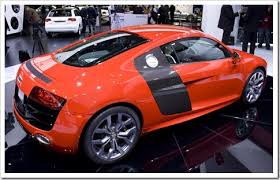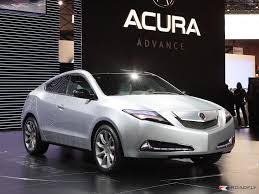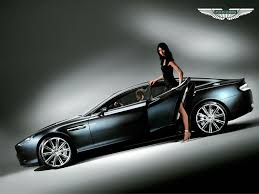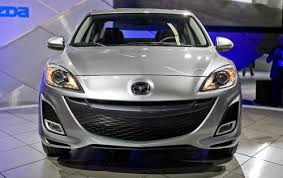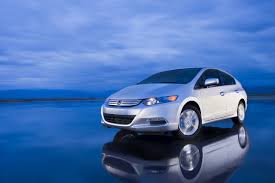
Overview
To the untrained eye it's hard to tell the difference between the new Seat Exeo and the current Audi A4. The front and rear light clusters and, of course, the badge give the game away.
With this in mind the ordinary family saloon buyer looking to cut costs may consider the Exeo a wise choice. Indeed, the 2.0 TDI PS Sport we tested costs £19,230 whereas the equivalent Audi A4 TDI retails at £23,425 - over £4,000 more expensive.
This car, however, is based on the previous-generation A4, first built in 2001. It's not a cynical rebadging exercise, though: Seat has taken the trouble of changing 30% of the parts.
It's not a direct rival to the current A4 anyway - it's taking on the likes of the Ford Mondeo and the Vauxhall Insignia, and it's hard not to be seduced by the thought that you are getting Audi quality for Seat money. Prices start at £17,735 for the generously equipped entry-level Exeo and that's pretty competitive when you compare it the base-spec Mondeo which starts at just over £17,390. It's here the Exeo starts to make sense.
The Exeo uses the new generation of Volkswagen engines so it's not been short-changed. The old noisy, lethargic and unrefined pumpe duse diesel engines makes way for a torquey 2.0-litre common-rail engine and there's also a smooth-revving 2.0-litre in the line-up. So are you really getting Audi quality at Mondeo money? Read on to find out.
With this in mind the ordinary family saloon buyer looking to cut costs may consider the Exeo a wise choice. Indeed, the 2.0 TDI PS Sport we tested costs £19,230 whereas the equivalent Audi A4 TDI retails at £23,425 - over £4,000 more expensive.
This car, however, is based on the previous-generation A4, first built in 2001. It's not a cynical rebadging exercise, though: Seat has taken the trouble of changing 30% of the parts.
It's not a direct rival to the current A4 anyway - it's taking on the likes of the Ford Mondeo and the Vauxhall Insignia, and it's hard not to be seduced by the thought that you are getting Audi quality for Seat money. Prices start at £17,735 for the generously equipped entry-level Exeo and that's pretty competitive when you compare it the base-spec Mondeo which starts at just over £17,390. It's here the Exeo starts to make sense.
The Exeo uses the new generation of Volkswagen engines so it's not been short-changed. The old noisy, lethargic and unrefined pumpe duse diesel engines makes way for a torquey 2.0-litre common-rail engine and there's also a smooth-revving 2.0-litre in the line-up. So are you really getting Audi quality at Mondeo money? Read on to find out.
Reliability and Quality
The previous-generation Audi A4 was a pretty solid car, so we think it's fair to assume your shiny new Exeo will stay bolted together for years to come. The cabin is of a decent quality but we did get a rather annoying rattle from the alloy trim on the gearlever.
The mechanicals and exterior quality should stand the test of time if customer satisfaction surveys are a guide. In the 2008 JD Power Survey the A4 finished 20th out of 100 models - not bad- but Seat finished 21st out of 28 brands - not particularly good. Still, we think the A4 result gives a more accurate picture for the Exeo.
The mechanicals and exterior quality should stand the test of time if customer satisfaction surveys are a guide. In the 2008 JD Power Survey the A4 finished 20th out of 100 models - not bad- but Seat finished 21st out of 28 brands - not particularly good. Still, we think the A4 result gives a more accurate picture for the Exeo.
On the road
There are three engines on offer with the Seat Exeo: a 2.0-litre 140bhp common-rail diesel, a 170bhp diesel and a 197bhp turbocharged 2.0-litre petrol.
We tested the 140bhp diesel and came away extremely impressed with the low-down pull - the maximum torque of 236lb-ft is delivered as low as 1,750rpm, ideal for A-road cruising and more than adequate for town driving. It will take you from 0-62mph in 9.2 seconds and then all the way up to a top speed of 133mph and that's on par with a similar powered Ford Mondeo and even a BMW 3-Series.
The 170bhp does 0-60mph in 8.4 seconds with a top speed of 142mph and the petrol will complete the benchmark sprint in 7.3 seconds and top out at 149mph.
Handling-wise the Exeo is pretty predictable: dynamically it's not in the same league as the Mondeo and 3-Series, but it's acceptable and you'd have to be a picky travelling salesman to start complaining to the fleet manager about it. Turn in and the car will respond nicely - it's not prone to too much body lean because the springs are rather firm. But it feels safe and secure and it's only when you are charging into a corner that you'll start to experience any levels of understeer.
The old A4's steering didn't feel particularly precise but the new Servotronic power has helped things on the Exeo. There's a bit more weight now to give you more confidence behind the wheel.
The brakes have a nice progressive feel but the gearchange is fractionally notchy at times, particularly if you are going down from third to second.
We tested the 140bhp diesel and came away extremely impressed with the low-down pull - the maximum torque of 236lb-ft is delivered as low as 1,750rpm, ideal for A-road cruising and more than adequate for town driving. It will take you from 0-62mph in 9.2 seconds and then all the way up to a top speed of 133mph and that's on par with a similar powered Ford Mondeo and even a BMW 3-Series.
The 170bhp does 0-60mph in 8.4 seconds with a top speed of 142mph and the petrol will complete the benchmark sprint in 7.3 seconds and top out at 149mph.
Handling-wise the Exeo is pretty predictable: dynamically it's not in the same league as the Mondeo and 3-Series, but it's acceptable and you'd have to be a picky travelling salesman to start complaining to the fleet manager about it. Turn in and the car will respond nicely - it's not prone to too much body lean because the springs are rather firm. But it feels safe and secure and it's only when you are charging into a corner that you'll start to experience any levels of understeer.
The old A4's steering didn't feel particularly precise but the new Servotronic power has helped things on the Exeo. There's a bit more weight now to give you more confidence behind the wheel.
The brakes have a nice progressive feel but the gearchange is fractionally notchy at times, particularly if you are going down from third to second.


Safety and Security
The 2001 Audi A4 secured 4 stars out of 5 for adult occupant protection and 1 star out of 4 for pedestrian safety in the Euro NCAP crash tests. That's not too shabby for a 2001 car but the game has moved on and there are now better-performing four-doors out there including the BMW 3-Series, Ford Mondeo and Vauxhall Insignia.
Stability control with electronic brake assist is standard as are front, side, and passenger airbags. Front active head restraints are also standard-fit.
An alarm and immobiliser are also included on the Seat Exeo's standard equipment list.
Stability control with electronic brake assist is standard as are front, side, and passenger airbags. Front active head restraints are also standard-fit.
An alarm and immobiliser are also included on the Seat Exeo's standard equipment list.


Running Costs
Thankfully the VW group diesels are refined and frugal. Official fuel consumption for the 140bhp version is 51.4mpg and that compares well with rivals. The 170bhp diesel returns 48.7mpg and the petrol 36.7mpg. Emissions levels are reasonable: the lower-powered diesel emits 143g/km of carbon dioxide which will put you in the Band F for road tax. The 170bhp emits 153g/km (Band G) and the petrol 179g/km (Band I).
Insurance will be affordable since the diesel models in groups 12 and 13. A group 14 rating for the high-powered petrol version should keep premiums low.
You won't pay a king's ransom if you choose the Exeo as a company car: Benefit-in-Kind rates are pegged at 19 % for the 140bhp diesel, 21% for the 170bhp diesel and a very affordable 23% for the petrol model.
Insurance will be affordable since the diesel models in groups 12 and 13. A group 14 rating for the high-powered petrol version should keep premiums low.
You won't pay a king's ransom if you choose the Exeo as a company car: Benefit-in-Kind rates are pegged at 19 % for the 140bhp diesel, 21% for the 170bhp diesel and a very affordable 23% for the petrol model.


Comfort and Equipment
The benefits of having an Audi A4 as a base are obvious as soon as you step inside the Exeo - this is probably the best cabin of any Seat. All the controls and switches respond with a satisfying thunk and the layout is no-nonsense and logical. All the materials look and feel decent and the addition of chrome on the rotary dials and the more aesthetically pleasing chromed circular vents offering an overall feeling of quality.
Fire up the Exeo and there's a slight sense of disappointment. The common rail diesel engine is noisy and rumbly, which is especially tiresome when you're pootling around town. It does settle down once you get up to motorway speeds, though.
The ride, although fidgety at times, is compliant and nicely balanced to give you reasonable comfort levels when cruising. The driving position is a little low but the seats are comfy and there's plenty of legroom and headroom available in the front and the back. Wind and road noise is well contained.
You can fold the rear seats down to get more space from the 460-litre boot. We stuck three golf bags in there with no problem with two rear seats folded down.
Base models get stability control, cruise control, electric windows and mirrors, split-folding rear seats, CD player and climate control.
Fire up the Exeo and there's a slight sense of disappointment. The common rail diesel engine is noisy and rumbly, which is especially tiresome when you're pootling around town. It does settle down once you get up to motorway speeds, though.
The ride, although fidgety at times, is compliant and nicely balanced to give you reasonable comfort levels when cruising. The driving position is a little low but the seats are comfy and there's plenty of legroom and headroom available in the front and the back. Wind and road noise is well contained.
You can fold the rear seats down to get more space from the 460-litre boot. We stuck three golf bags in there with no problem with two rear seats folded down.
Base models get stability control, cruise control, electric windows and mirrors, split-folding rear seats, CD player and climate control.
Used Value
Used prices for the Exeo are unlikely to be in the same league as the current Audi A4, but Seat still performs pretty well in the second-hand market.
The 140bhp 2.0-litre diesel will be the pick of the bunch and we expect it to retain between 38-40% of its original value after three years/36,000 miles. That trumps the 2.0-litre diesel Ford Mondeo's 35% residual value.
The 140bhp 2.0-litre diesel will be the pick of the bunch and we expect it to retain between 38-40% of its original value after three years/36,000 miles. That trumps the 2.0-litre diesel Ford Mondeo's 35% residual value.

